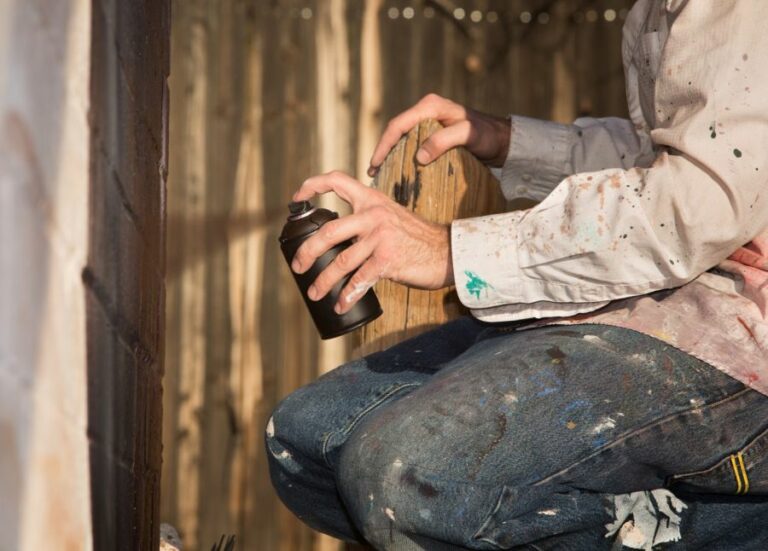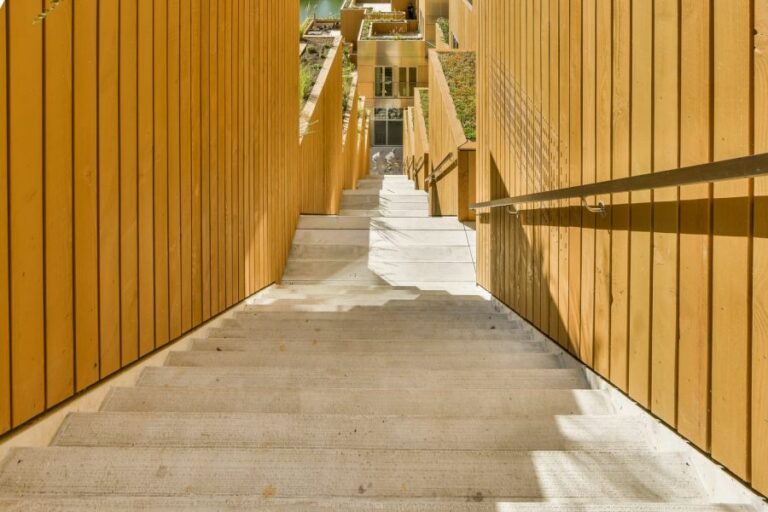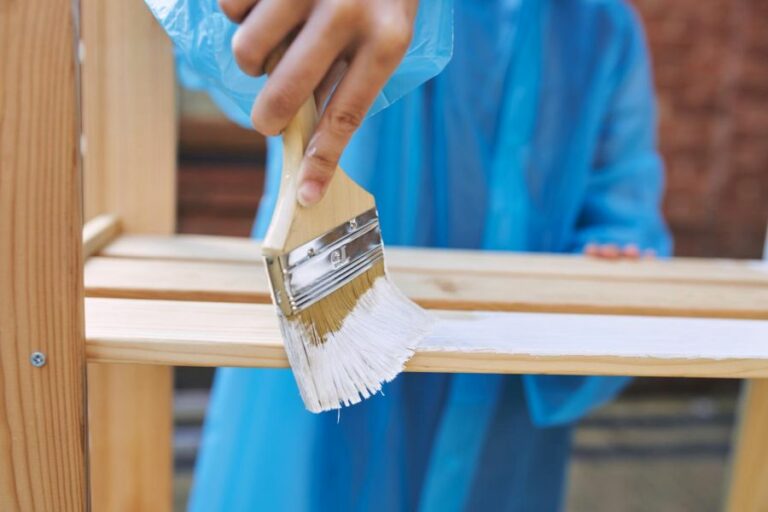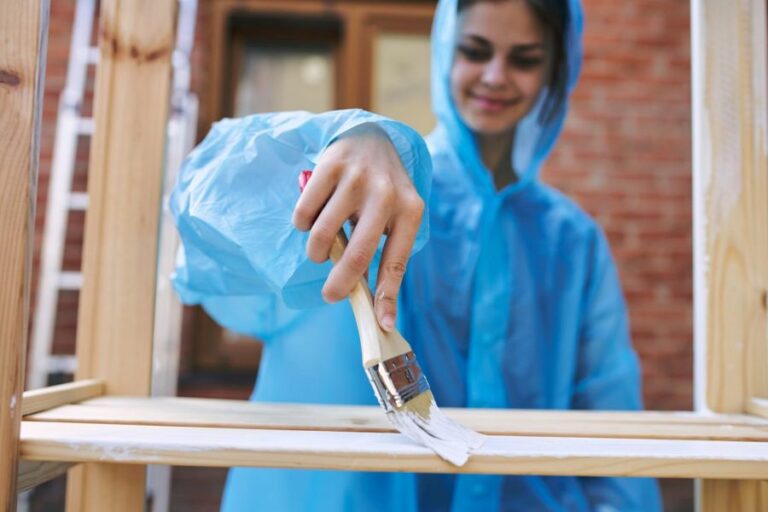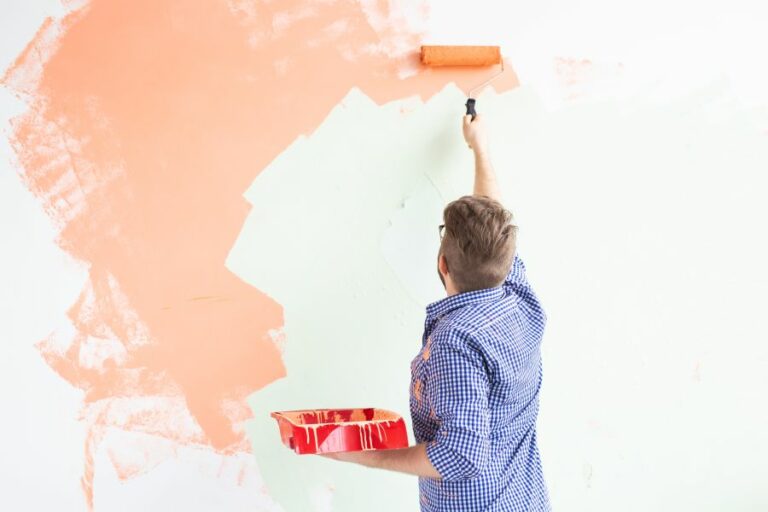Epoxy Outdoor Paint, 25 Things You Should Know
Are you looking for a durable and weather-resistant paint option for your outdoor surfaces? Look no further, as epoxy outdoor paint may just be your solution. This versatile paint ensures long-lasting protection and enhances the overall aesthetics of your exterior spaces. Let me walk you through the benefits of using epoxy outdoor paint and how it can transform your surfaces into something beyond your expectations.
Epoxy outdoor paint:>
Epoxy outdoor paint is a durable and long-lasting coating for exterior surfaces, protecting against weather, chemicals, and UV rays. Its two-component system, consisting of resin and hardener, creates a strong, adhesive surface ideal for concrete, metal, and wood. Easy maintenance, low-VOC formulations, and environmentally friendly options make epoxy outdoor paint popular for beautifying and preserving various outdoor surfaces.

Discover the wonders of epoxy outdoor paint! Its durability, waterproof qualities, and beautiful finish make it perfect for all your exterior projects. Are you interested in learning more? Read on for application tips, color options, and design ideas! Let’s take your outdoor space to the next level.
Contents
- 1 Epoxy Exterior Coating for Outdoor Surfaces
- 2 Is Epoxy Paint Suitable for Outdoor Applications?
- 3 What is the Durability and Lifespan of Epoxy Concrete Paint?
- 4 Is it Possible to Apply Epoxy on an Outdoor Driveway?
- 5 What is the Durability and Lifespan of Epoxy Paint?
Epoxy Exterior Coating for Outdoor Surfaces
Epoxy outdoor paint is a fantastic option for those looking to protect and beautify their outdoor spaces. This durable, long-lasting paint provides a tough, weather-resistant finish that will keep any exterior surface looking great for years to come.
• A Brief Overview of Epoxy Paint
Epoxy paint is a two-component system consisting of resin and a hardener. A chemical reaction occurs when these two parts are combined, creating a strong, durable, and highly adhesive surface.
This unique combination of properties makes epoxy paint an excellent choice for various exterior surfaces, including concrete, metal, and wood.
– Benefits of Using Epoxy Outdoor Paint
- Durability: One of the main reasons people choose epoxy paint for their exterior surfaces is its exceptional durability. Epoxy paint creates a wear-resistant and tough layer that can withstand exposure to the elements, as well as foot and vehicle traffic.
- Chemical Resistance: Many outdoor surfaces are subjected to various chemicals, including fertilizers, salt, and pool chemicals. Epoxy paint is highly resistant to these substances, helping to prevent damage and maintain the appearance of your outdoor surfaces.
- UV Resistance: Ultraviolet (UV) rays from the sun can take a toll on exterior surfaces, causing them to fade and lose their luster over time. Epoxy outdoor paint is formulated with UV-resistant properties, which means it will maintain its color and appearance even when exposed to direct sunlight.
- Easy Maintenance: Epoxy paint creates a non-porous surface that is incredibly easy to clean. Dirt, stains, and other debris can be easily wiped away with water and a mild detergent, keeping your outdoor surfaces looking their best with minimal effort.
- Environmentally Friendly: Many epoxy outdoor paints are made with low-VOC (volatile organic compounds) formulations, which are less harmful to the environment and human health. By choosing low-VOC epoxy paint, you can help reduce pollution and contribute to a cleaner, healthier environment.
• Preparing Your Outdoor Surfaces for Epoxy Paint Application
Proper surface preparation is crucial in achieving a long-lasting and durable epoxy paint finish. Following these steps will ensure that your surface is ready for the application of epoxy paint:
- Clean the Surface: Thoroughly clean the surface to remove any dirt, debris, or grease. You can use warm, soapy water or a pressure washer to get the job done. For stubborn stains or heavy grime, consider using a degreaser or a specialized cleaner designed for your specific surface.
- Repair Any Damage: Inspect your surface for cracks, holes, or other forms of damage that need to be repaired before applying the epoxy paint. Concrete surfaces can be patched with a concrete repair product, while wood surfaces may require sanding or filling with a wood filler.
- Ensure the Surface Is Dry: It’s essential that the surface is completely dry before applying epoxy paint. Allow the surface to dry for at least 24 hours after cleaning, and check for any signs of moisture. If applying epoxy paint to a concrete surface, conduct a moisture VapoMeter test to ensure that the concrete is dry enough for painting.
- Apply a Primer (If Necessary): Depending on the surface and the specific epoxy paint you’re using, you may need to apply a primer before the paint. The primer helps the epoxy adhere to the surface and creates a more even finish. Consult the manufacturer’s instructions on your chosen epoxy paint to determine if a primer is required for your project.
• Application Tips for Successful Epoxy Outdoor Paint Projects
For a successful epoxy paint project, keep these essential application tips in mind:
- Follow the Manufacturer’s Instructions: Epoxy paint products can vary in their formulation and application requirements. Always read and follow the instructions from the manufacturer to ensure the best possible results.
- Mix the Epoxy Components Thoroughly: Epoxy paint consists of two components (resin and hardener) that need to be mixed thoroughly before application. Failing to properly mix the components can result in an uneven or prematurely failing paint job.
- Apply in Ideal Weather Conditions: Epoxy paint is sensitive to temperature and humidity, so it’s important to apply it in ideal weather conditions. Generally, temperatures between 50°F and 80°F with relative humidity below 85% are best for applying epoxy outdoor paint.
- Use the Correct Application Tools: To achieve a smooth, even finish, use the appropriate application tools for your specific epoxy paint product. This may include brushes, rollers, or even a paint sprayer. Be sure to consult the manufacturer’s instructions for recommendations on the best tools to use.
- Allow for Adequate Curing Time: Epoxy paint needs time to cure and fully harden before it’s ready for use. The curing times can vary depending on the specific product, so be sure to follow the manufacturer’s recommendations for curing times.
• Additional Resources
For more information about epoxy outdoor paint and proper application techniques, the Paint Quality Institute offers informative resources and expert advice on all things related to paint and coating products.
Additionally, the U.S. Environmental Protection Agency (EPA) provides guidance on selecting environmentally friendly paint products, and the American Coatings Association offers resources on a range of paint topics, from application to safety.
In conclusion, epoxy outdoor paint is a reliable and durable solution for protecting and beautifying a variety of exterior surfaces. Remember to take the time to prepare your surfaces properly, follow the manufacturer’s instructions, and apply the paint in ideal weather conditions to achieve the best results.
With proper application and care, your epoxy-painted surfaces will look great and last for years to come.
Is Epoxy Paint Suitable for Outdoor Applications?
Epoxy paint is known for its durability, strength, and resistance to a variety of substances. It’s a popular choice for many industrial and commercial applications, including garage floors, warehouse floors, and even countertops.
But can epoxy paint stand up to the test of time and exposure when used outdoors? Let’s dive into the details to help you understand whether epoxy paint is a good choice for your outdoor project.
• Understanding Epoxy Paint
Before we delve into the suitability of epoxy paint for outdoor use, it’s essential to understand what epoxy paint is and how it differs from other types of paint. Epoxy paint is a two-component paint system consisting of an epoxy resin and hardener.
When mixed together, the resin and hardener react chemically, creating a highly durable polymer that bonds strongly with the surface it’s applied.
Epoxy paint is highly resistant to a variety of substances, including water, oil, chemicals, and abrasives, making it an excellent choice for heavy-duty applications.
– How Does Epoxy Paint Perform Outdoors?
When considering epoxy paint for outdoor use, its performance in several key areas is critical:
UV Resistance
One of the most significant challenges that any outdoor paint faces is exposure to UV rays from the sun. UV radiation can degrade the paint surface, cause it to lose its shine, and weaken its bond with the underlying material.
Some epoxy paints, such as those formulated with aliphatic resins, offer better UV resistance than others. However, epoxy paint is not inherently UV resistant and may become discolored or chalky when exposed to sunlight for extended periods.
To enhance the UV resistance of epoxy paint outdoors, it is recommended to apply a UV-resistant topcoat. This will protect the epoxy paint from the damaging effects of sunlight and maintain its color and appearance.
Weather Resistance
Epoxy paint is highly resistant to water, making it an excellent choice for use in damp or wet environments. It prevents moisture from penetrating the surface it’s applied to, protecting the underlying material from rot, rust, and other forms of water damage.
Furthermore, epoxy paint can withstand temperature fluctuations and withstand the freeze-thaw cycle without breaking down or losing its bond.
Outdoors, epoxy paint is exposed to harsh weather conditions such as rain, snow, and ice. However, its water resistance and ability to withstand temperature fluctuations make it a suitable choice for outdoor applications.
Durability and Adhesion
When applied correctly, epoxy paint is known for its excellent adhesion and long-lasting durability. This is largely due to the chemical reaction that occurs between the resin and hardener, which creates a strong bond with the surface it’s applied to.
Proper surface preparation and correct paint application are crucial for maximizing epoxy paint’s performance outdoors.
Prepping the surface, including cleaning, degreasing, and roughening (e.g., using sandblasting, etching, or grinding) ensures optimal adhesion and durability of the epoxy coating.
– Epoxy Paint Curing Issues
One possible concern when using epoxy paint outdoors is that temperature and humidity can impact the curing process. Epoxy paint requires specific conditions for the curing process (generally between 50F and 90F with low humidity).
The curing process may be affected in environments with extreme temperatures or high humidity, leading to reduced strength and adhesion.
If you’re using epoxy paint outdoors, monitoring the weather and applying the paint under favorable conditions to ensure proper curing is essential.
• Outdoor Applications for Epoxy Paint
Given its characteristics and adaptability, epoxy paint can be an excellent choice for several outdoor applications:
- Garage and driveway floors
- Outdoor walkways and patios
- Deck coatings
- Concrete surfaces, such as retaining walls or pools
- Metal surfaces, like railings or gates
• Conclusion
While epoxy paint may not be entirely UV resistant, its many strengths, like durability, adhesion, and weather resistance, make it a viable choice for many outdoor applications.
With proper surface preparation, correct application, and the addition of a UV-resistant topcoat, epoxy paint can deliver long-lasting, attractive results for a wide range of outdoor projects.
What is the Durability and Lifespan of Epoxy Concrete Paint?
Epoxy concrete paint is widely regarded for its durability and resilience. Many homeowners and businesses choose this type of paint for their concrete floors to protect them from wear and tear, extend their lifespan, and keep them looking great.
• Epoxy Concrete Paint: Typical Lifespan
Epoxy concrete paint can last anywhere from 5 to 10 years under normal circumstances, with some high-quality epoxy products lasting even longer. This makes it an ideal investment for your concrete flooring, as it provides long-lasting protection while enhancing your floors’ visual appeal.
– Commercial vs. Residential Floors
The longevity of epoxy concrete paint can vary depending on the specific environment and usage of the floor. In commercial and industrial settings where traffic is heavier and wear and tear is more frequent, the lifespan of epoxy paint may be shorter.
In these settings, high-quality epoxy paint is crucial, and the lifespan is likely to range between 5 and 7 years. On the other hand, with proper care and maintenance, residential epoxy floors can have a lifespan of 7 to 10 years or longer.
• Factors Affecting the Lifespan of Epoxy Concrete Paint
Several factors can impact the lifespan of epoxy concrete paint on your floors, affecting its overall durability and appearance. These factors include:
– Surface Preparation
Surface preparation is critical to the long-term success of an epoxy concrete paint job. A clean, well-prepared surface ensures optimal adhesion of the epoxy, leading to a longer-lasting and more durable finish.
Failure to properly prepare the surface can result in issues such as peeling and delamination, significantly shortening the lifespan of the epoxy coating.
– Quality of Epoxy Paint and Application
The quality of epoxy paint and how it is applied plays a significant role in its longevity. High-quality epoxy products are designed to withstand heavy traffic, chemicals, and abrasions, ensuring a longer-lasting finish.
Additionally, it’s crucial to apply the epoxy paint according to the manufacturer’s instructions and to use the recommended quantity of the product. Cutting corners with a lower-quality product or improper application can lead to a shorter lifespan for your epoxy floor paint.
– Maintenance and Care
Proper maintenance and care are essential to ensuring the longevity of your epoxy concrete paint. Regular cleaning can help to prevent dirt and debris from accumulating and causing damage to the floor.
It’s also important to address any spills or stains as soon as possible, as certain chemicals can potentially harm the epoxy coating.
Adopting a comprehensive maintenance plan that includes thorough cleaning, an inspection of your floors, and addressing potential issues promptly can significantly increase the lifespan of your epoxy concrete paint.
– Environmental Conditions
Environmental conditions, such as temperature, humidity, and exposure to sunlight, can impact the durability and appearance of epoxy concrete paint. For example, excessive heat or humidity during the curing process can lead to bubbles and other irregularities in the finish.
Long-term exposure to direct sunlight can also cause fading and discoloration of the epoxy floor paint. When selecting the right epoxy paint for your environment, ensure it is designed to withstand the specific conditions of your space.
• Tips for Prolonging the Lifespan of Epoxy Concrete Paint
To maximize the lifespan of your epoxy concrete paint, follow these best practices:
- Select the right epoxy paint for your needs: For high-traffic areas, choose a heavy-duty epoxy paint designed to withstand wear and tear. Residential floors may require a less robust formula but should still prioritize durability and longevity.
- Ensure proper surface preparation: Thoroughly clean and prep the surface before applying epoxy paint to promote optimal adhesion and a longer-lasting finish. This may involve removing existing coatings, filling cracks, and addressing moisture issues.
- Apply epoxy paint according to instructions: Follow the manufacturer’s instructions for mixing, application, and curing of epoxy paint to ensure the best possible results.
- Implement a regular maintenance plan: Regular cleaning, inspections, and addressing issues promptly will prolong the lifespan of your epoxy floor.
- Be mindful of environmental conditions: If your floors are exposed to harsh conditions such as high heat, humidity, or direct sunlight, select an epoxy paint specifically designed to withstand these factors.
For more information on epoxy concrete paint and best practices for application and maintenance, consult resources from reputable organizations such as the American Concrete Institute.
In conclusion, the lifespan of epoxy concrete paint can vary greatly depending on factors including the quality of the paint, proper surface preparation, and environmental conditions.
By selecting a high-quality epoxy paint, ensuring proper application, and implementing a comprehensive maintenance plan, you can significantly enhance the longevity of your epoxy floors and enjoy a beautiful, durable finish for years to come.
Type | Lifespan |
|---|---|
Water-based epoxy | 3-4 years |
Solvent-based epoxy | 4-6 years |
100% solid epoxy | 8-10 years |
Is it Possible to Apply Epoxy on an Outdoor Driveway?
Epoxy is often touted as a versatile, durable, and attractive option for various surfaces in and around the home, but is it a suitable solution for your outdoor driveway?
• Benefits of Epoxy for Outdoor Driveways
Epoxy offers several advantages that make it a popular choice for outdoor driveway applications, including:
– Durability and Strength
Epoxy coatings possess considerable strength and durability, effectively safeguarding the underlying concrete from wear and tear, as well as chemical corrosion.
As a result, an epoxy-treated driveway can better withstand heavy vehicle use, extreme weather patterns, and common fluids like motor oil and chemicals from winter de-icing.
– Slip-Resistant Surface
An epoxy-coated driveway offers a slip-resistant surface, which can reduce the risk of accidents due to precipitation or vehicle fluid leaks. This is particularly beneficial in regions experiencing frequent rainfall or snow.
– Aesthetic Appeal
Epoxy coatings are available in numerous colors and finishes, providing homeowners with more flexibility to match their driveway with the overall landscaping or home design scheme.
– Easy Maintenance
An epoxy coating seals your driveway against dirt, grease, and chemical buildup, making it a breeze to clean and maintain. Simple pressure washing or using a hose can often restore the driveway’s appearance and remove any unsightly stains.
• Possible Drawbacks of Epoxy Applications
Despite the myriad benefits, there are several potential drawbacks to consider when contemplating an epoxy application for your outdoor driveway:
– Environmental Impact
In certain climates, especially those with extreme temperature fluctuations, epoxy coatings may not hold up as well. Additionally, excessive moisture within the concrete substrate may inhibit the proper adhesion of the epoxy layer, compromising its long-term effectiveness.
– UV Exposure Issues
Prolonged exposure to sunlight may cause discoloration in epoxy coatings, potentially diminishing the initial appeal and necessitating more frequent maintenance.
– Cost Factors
Although epoxy is a durable and long-lasting solution, the upfront cost of materials and professional installation may exceed that of traditional driveway materials like asphalt or plain concrete.
• Step-by-Step Application Process
If you’ve weighed the pros and cons and decided that an epoxy is a fitting option for your outdoor driveway, the following step-by-step process can help guide your project:
– Step 1: Surface Preparation
Proper surface preparation is crucial for the epoxy to adhere effectively. Begin by thoroughly cleaning your driveway to eliminate dirt, grease, and other contaminants. Additionally, any existing cracks, pits, or uneven surfaces should be repaired using a suitable patching material.
– Step 2: Epoxy Primer Application
Apply a compatible epoxy primer to the surface of your driveway to enhance the bond between the concrete and epoxy coating. Carefully follow the manufacturer’s directions for mixing and application, and allow the primer to dry completely before proceeding.
– Step 3: Epoxy Coating Application
Mix and apply the epoxy coating according to the manufacturer’s specifications, making sure to maintain a consistent thickness for optimal results. Depending on the product and desired finish, more than one coat may be necessary. Allow ample time for the epoxy to cure as directed.
– Step 4: Sealing and Final Touches
Finally, apply a compatible sealer or topcoat to safeguard your epoxy driveway from fading, abrasion, and potential discoloration caused by UV exposure. Follow the manufacturer’s recommendations for curing time and any additional steps needed.
• Conclusion
In summary, epoxy can be a viable, durable, and aesthetically pleasing choice for outdoor driveways, offering several advantages over conventional materials. However, it is essential to consider potential drawbacks and environmental factors before making a decision.
Careful surface preparation, attention to detail during the application process, and adherence to the manufacturer’s guidelines are critical for a successful outcome.
Question | Answer |
|---|---|
Can you epoxy an outdoor driveway? | Yes, you can epoxy an outdoor driveway, but it is important to use an epoxy that is designed for outdoor use and has essential features like UV resistance and durability. Proper surface preparation and application techniques are also crucial for the epoxy to perform well in outdoor environments. |
What is the Durability and Lifespan of Epoxy Paint?
Epoxy paint is a popular choice for many homeowners and contractors due to its durability, resistance to wear and chemicals, and the seamless finish it provides. However, one question that frequently comes up is: how long does epoxy paint last?
• Factors Affecting the Lifespan of Epoxy Paint
– Surface Preparation
Proper surface preparation is crucial for maximizing the lifespan of epoxy paint. This begins with a thorough cleaning and degreasing of the surface to ensure proper adhesion. Next, if the substrate is porous like concrete, it must be ground or etched to provide a better bond.
Any exposed rebar, cracks, or other damage should be repaired prior to application.
Tip: Be sure to follow the manufacturer’s guidelines for surface preparation and use the recommended products to achieve the best results.
– Primer and Epoxy Selection
Choosing the right primer and epoxy paint will have a significant impact on its lifespan. High-quality water-based epoxy paints typically last up to five years, whereas 100% solid epoxy coatings can last over 20 years under normal conditions.
However, more demanding conditions may require specialized epoxy formulations, which may come at higher costs.
– Application Techniques
Epoxy coatings’ lifespan can be affected by the professionalism of the application process. Hiring experienced applicators, using the proper tools, and following the right techniques will help ensure that the coating has a uniform thickness, adheres properly, and cures as intended.
This, in turn, will significantly reduce the chances of failure and extend the coating’s overall lifespan.
– Environmental Conditions
Temperature, humidity, and exposure to chemicals or contaminants can all influence the lifespan of epoxy paint. Generally, epoxy coatings perform best in environments without continuous exposure to direct sunlight, extreme temperatures, or harsh chemicals.
• Maintaining and Extending the Life of Epoxy Paint
– Regular Cleaning
Keeping the epoxy-coated surface clean is essential for maximizing its lifespan. This includes regularly sweeping or vacuuming away dust and debris, as well as promptly cleaning up any spills or contaminants.
For heavy-duty applications like garage floors, using a pressure washer with mild detergent on a low-pressure setting can help maintain the coating’s appearance.
– Wear and Tear
Epoxy coatings are resistant to abrasion and wear, but they are not indestructible. Regularly repositioning heavy equipment, using protective floor mats in high-traffic or high-impact areas, and avoiding dragging sharp or abrasive objects across the surface will help prevent premature wear.
– Repairing Damages
Inspect the epoxy-coated surface regularly for signs of wear or damage, such as cracks or chips. Addressing these issues early by filling any gaps with epoxy filler and re-coating as necessary will help extend the life of the coating.
• Potential Issues to Watch Out For
– Moisture Issues
Epoxy coatings are sensitive to moisture, both during the application process and after they have cured. It is important to be aware of any moisture issues in the substrate or surrounding environment that could cause the coating to fail prematurely.
– Delamination
Delamination occurs when the epoxy coating loses its bond with the substrate, often due to surface contamination, moisture issues, or poor surface preparation. Be sure to monitor your epoxy coating for any signs of delamination, such as bubbling, lifting, or peeling.
– Discoloration
While epoxy paints are generally resistant to fading and discoloration, some lower-quality formulations may show deterioration over time. Exposure to harsh chemicals, sunlight, or heat can also cause epoxy coatings to yellow, chalk, or fade.
Choosing high-quality epoxy paint and adhering to proper maintenance practices will help prevent discoloration issues.
• Conclusion
Epoxy paint can last anywhere from a few years to several decades, depending on factors such as surface preparation, primer and epoxy selection, application techniques, and environmental conditions.
By investing in high-quality materials, employing experienced professionals, and adhering to a regular maintenance schedule, you can maximize the lifespan of your epoxy paint and enjoy a beautiful, durable surface for years to come.
Type of Surface | Expected Lifespan |
|---|---|
Residential garage floors | 3-10 years |
Commercial floors | 5-15 years |
Outdoor surfaces | 2-5 years |
Industrial floors | 10-20 years |

